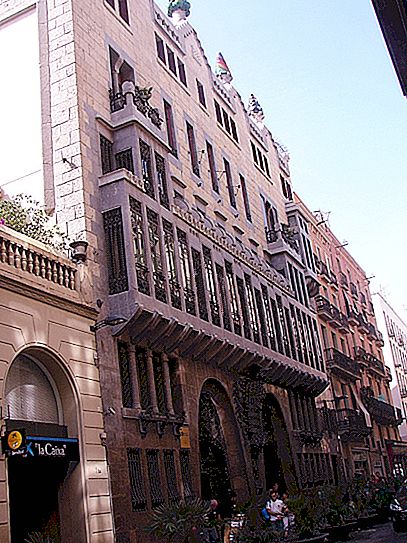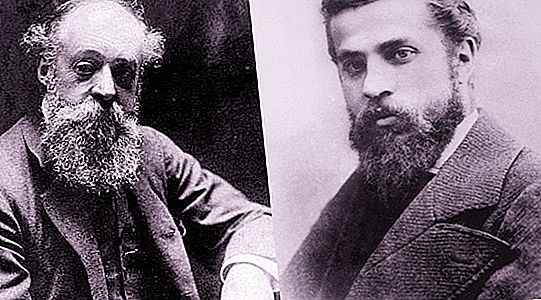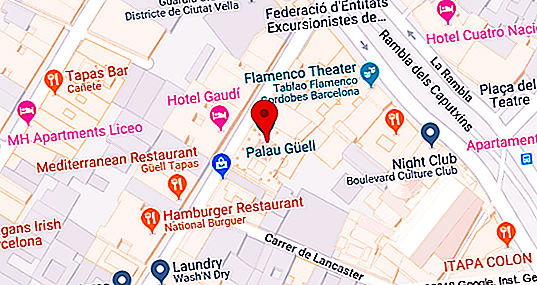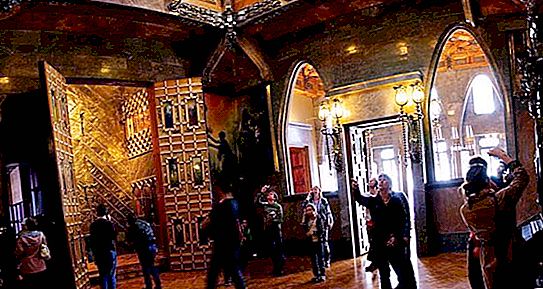The Guell Palace in Barcelona is one of the most beautiful former residential buildings in the city and throughout Spain, designed by the inimitable architect Antonio Gaudi. Currently it is available for visiting by tourists. All information about the magnificent Guell Palace in Spain, as well as visitor reviews - later in this article.
basic information
The Guell Palace in Barcelona was built from 1885 to 1890, and only after almost a hundred years, in 1984, was included in the UNESCO list along with the rest of the works of the architect Gaudi.
The style of the building belongs to modernity and the so-called "Catalan modernism", neo-Gothic and Art Nouveau. The entire exterior was created from natural stones, gray marble, wrought iron and glass mosaic trenkadis. The area occupied by the palace is surprisingly small - 22 by 18 meters. This is due to the fact that the customer Eusebi Guell needed a house in this place, between two previously constructed buildings.
Eusebi Guell and Antonio Gaudi
The World Exhibition, held in Paris in 1878, became a platform for acquaintance, and then long friendship and cooperation, of the young Catalan architect Antonio Gaudi and the Barcelona entrepreneur, politician and philanthropist Eusebi Güell. The latter was delighted with the work of the architect, and in many ways it was to him that humanity owed the creation of the best masterpieces of the architect, since he introduced Gaudi to the Catalan nobility and provided many expensive orders for the construction of houses and residences.
In addition to the Guell Palace, Gaudi designed his estate, a colonial church (was not finished) and the famous architectural Park Guell. The customer and the creator of the palace in the photo below.
History of creation
It is believed that it was during the construction of this palace that Gaudi first tested the achievements of his unique style, thanks to which the architect subsequently became famous throughout the world. A lover of traditions, Eusebi Güell ordered himself to build a huge mansion on the poorest street next to his parents’former home. That is why the construction site was so small, but Antonio Gaudi did an excellent job and managed to "squeeze" a huge palace into a small space.
The construction of the building itself was completed in 1888, for another two years, Gaudi was engaged in internal architecture and decoration, as well as the creation of stylistically suitable pieces of furniture. One of the architect’s unique ideas was the so-called light domes - rows of windows in the walls and ceiling that intelligently scatter light through the halls and rooms. The main hall of the Guell Palace in the photo below - here you can see the effect created by the light openings in the main dome, which, by the way, has a height of 20 meters.
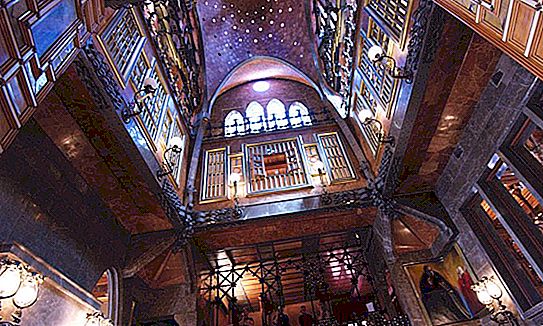
After the construction was completed, Guell’s neighbors ridiculed the palace in every possible way, since on a poor street it seemed too pretentious and inappropriate.
Exterior
The Guell Palace in Barcelona is able to win the heart of a tourist with its appearance alone. Unfortunately, in the city there is not a single point from which it is possible to consider the entire structure. However, even the main facade is a work of art.
First of all, attention is attracted by two huge arches with wrought iron ornaments, G monograms and lattice gates. It was assumed that through these arches even two-story crews could safely pass. Between the arches is a very unusual, voluminous coat of arms of the Guell family, over which the forged phoenix rises.
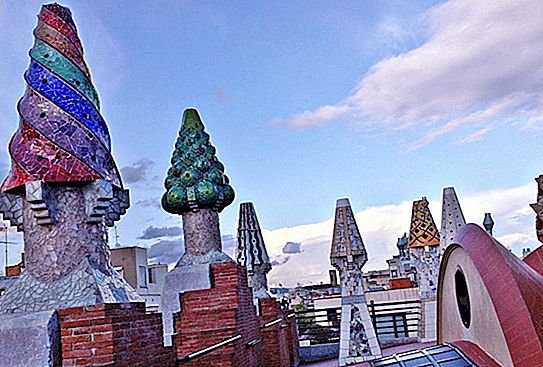
Special attention should be paid to the magnificent, just fabulous, turrets on the upper palace vault, which serve as chimneys. They are made in different shapes and colors, decorated with chaotic glass mosaic trenkadis. Subsequently, Gaudi expanded this style to create Park Guell. The architect planned the palace as the embodiment of hell, earth and paradise - from the cellar to the roof. Thus, the incredible towers were to embody paradise beauty.
Interior decoration
Gaudi's most interesting decision was to connect the entire space of the palace with a huge dome, as in a temple. All interior elements are not only luxurious, but also have a different connotation.
In the religious idea of the architect described above, the residential premises of the palace were to become the personification of the contact of heaven and earth. Therefore, he filled the room with Catholic symbols. So, 120 columns appeared in the house, hinting at the story of Pedro the Cruel, wooden ceilings represent the era of the kings Ferdinand of the Second Aragon and Isabella of the First of Castile, and the fresco with Hercules should be associated with the art connoisseur with the salon of Philip the Fourth in Madrid.
But despite all this, when planning the palace of Guell, Gaudi still adhered to the classic layout of the premises. This later he will destroy all the generally accepted canons of internal architecture, and in this house he created universally accepted halls for receptions, the second floor with residential bedrooms and offices, the third for servants and utility needs. The main staircase in the Guell Palace in Barcelona - in the photo below.

The visitors are particularly delighted by the huge inlaid doors leading from the living room to the home chapel. Unfortunately, she herself was destroyed during the First World War. According to the memoirs, it was made in the style of a Turkish bath.
Like all other houses of Guell, Gaudi developed a unique furniture design for the palace, the most suitable for the stylistic decisions of each room and the building as a whole. Each item (or headset) is unique and exists in only one instance.
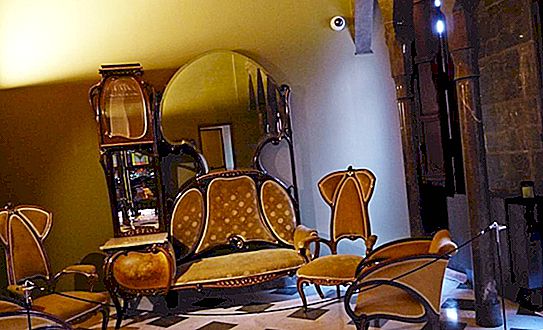
Address
Guell Palace is located in the so-called old city of Barcelona, in an area called El Raval, Carrer Nou de la Rambla, building number 3-5.
You can get to it by public transport. If you take the subway, you should take the green line and get off at Liceu or Drassanes stations. The bus numbers to the palace are: 14, 59 and 91. For your convenience, a map with the exact location is provided below.
Mode of operation and admission
Guell Palace is ready to receive its visitors daily, except Mondays, Christmas, New Year holidays and other national holidays. Opening hours vary by season: in the summer (counted from April to September) - from 10:00 to 20:00, in the winter (from October to March) - from 10:00 to 17:30.
The cost of the admission ticket depends on the specific purpose of the visit (regular inspection, full excursion, additional exhibition or concert, and so on). The price varies from 5 to 12 euros, that is, from about 380 to 916 rubles.
There are currently no discount tickets, but admission is free on the first Sunday of every month. The number of preferential visits is limited, so experienced tourists are advised to come at least an hour before the opening. Those who did not manage to log in for free at 10 o’clock can queue for the next free launch - from 13:30.
